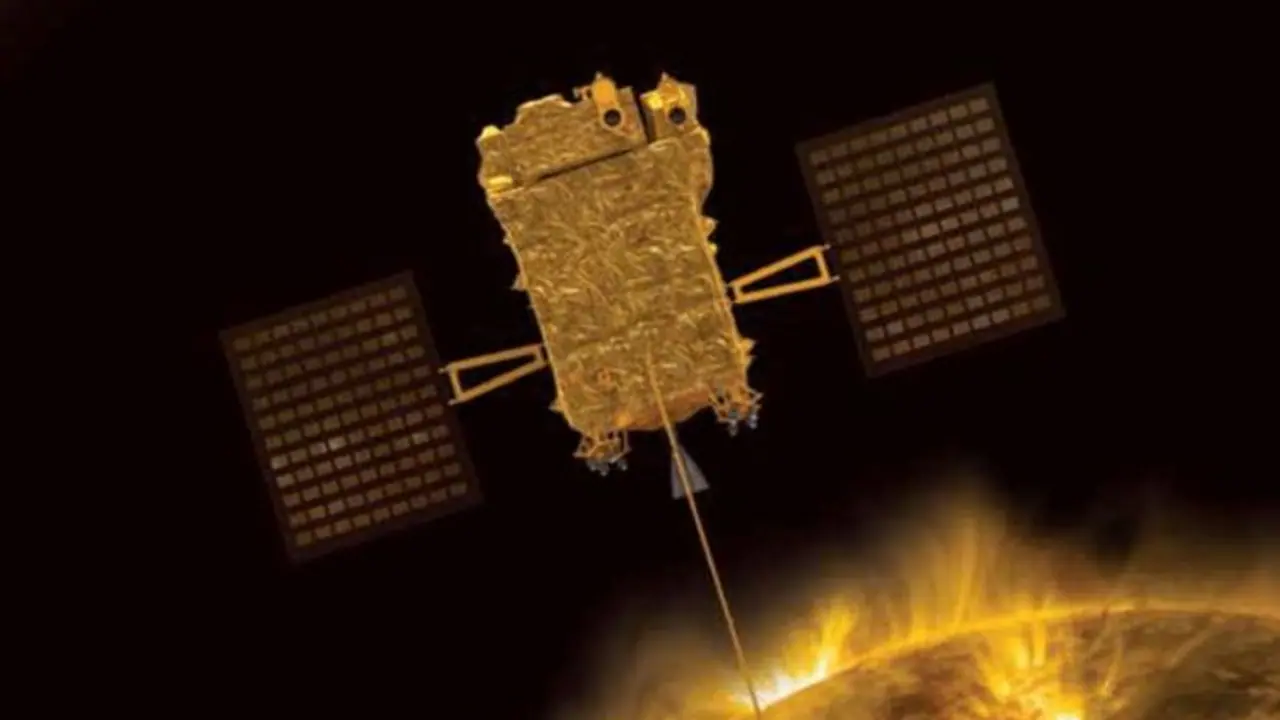The halo orbit around Lagrange Point L-1 will help protect Aditya L-1 from the Sun’s heat. This means that the spacecraft will not be exposed to the Sun’s heat directly and will also be protected from Earth’s gravity, says Girish Linganna
The Aditya L-1 spacecraft -- a 1,500 kg-class satellite -- represents a specialized scientific mission by the Indian Space Research Organisation (ISRO). It aims to investigate the Sun’s characteristics from a ‘halo orbit’ situated around the Lagrangian point 1 (L-1) within the Sun-Earth system, located about 1.5 million kilometres away from Earth. This unique orbit at L-1 ensures uninterrupted solar observations, unaffected by eclipses or occultation.

This point has its own advantages as it is located beyond Earth’s magnetic field, which makes it possible to carry out accurate measurements of incoming charged particles. It is expected to take the spacecraft more than 120 days to reach L-1.
A Lagrange point is a location in space where the gravitational forces of two celestial bodies (in this case, Earth and the Sun) are perfectly balanced by the centripetal force needed for a small-sized object to move in unison with them. Positioning a satellite within the ‘halo orbit’ encircling the L-1 point offers a significant benefit: unobstructed and continuous access to sunlight, free from any occurrences of occultation or eclipses.
This advantage enables more precise monitoring of solar activities and their impact on space weather in real-time.
Coolness of the Halo Orbit
The average temperature in the halo orbit is -148°C, although the temperature can range between -184°C to -180°C and -83°C. The Sun’s activity, such as sunspots and solar flares, can also affect the temperature at L-1.
When the Sun is more active, it emits more solar radiation, which can heat up Earth and the space around it. Despite the cold temperatures, Lagrange Point L-1 is a popular location for spacecraft. This is because it is a stable location where spacecraft can stay in orbit without using much fuel.
Solar & Heliospheric Observatory
The Solar and Heliospheric Observatory (SoHO) spacecraft -- a cooperative effort between the European Space Agency (ESA) and NASA -- is currently located at L-1.
Launched on December 2, 1995, the European Space Agency spacecraft, built by a European industrial consortium led by Matra Marconi Space, was put into space on a Lockheed Martin Atlas IIAS launch vehicle. The mission was expected to be completed in 1998. Instead, it is still active today and is now likely to keep working until 2025, by which time it will have been in space for 30 years.
However, the calibration of the gyroscopes that fixed the satellite’s position created problems and the ground crew lost control over it. To make things worse, the satellite’s solar panels also went off-position and failed to provide power. They eventually succeeded three months later, although many in the scientist fraternity had given up the project for loss.
Saviour: Life-Giving Battery
All this while, only SoHO’s battery kept the mission going. Spacecraft orbiting the Earth lose sight of the Sun for a short duration on each orbit, so they depend on battery power during this time. SoHO’s solar panels, however, were programmed to keep facing the Sun, so the battery was required only in case of emergencies. Fortunately, it did its job.
A space battery is no normal battery and must be small and lightweight as the cost of firing a rocket into space builds up with each extra pound. It must be resilient to the launch vibrations and wide-ranging temperature changes once in space.
The outer layer of a satellite can reach temperatures of up to 250°C on the side facing the Sun and -150°C on the other that faces away. The battery is shielded from these extremes but must be capable of working in temperatures between -10°C and 40°C. It must be able to do all of this and, if the battery fails, the mission is over.
Over 6,000 scientific papers have used SoHO. It has also discovered over 4,000 comets, but all this hoopla could have come to an end after only 18 months had it not been for one small battery.
Keeping Cool: SoHO & Aditya L-1
SoHO is protected from damage by the Sun’s heat in several ways and so will Aditya L-1. The spacecraft is covered with a heat shield made of a material called Multi-Layer Insulation (MLI), which deflects most of the Sun’s heat away from the spacecraft. The MLI on SoHO is made up of hundreds of layers of aluminized mylar, which is a thin, reflective material. The MLI is covered with a protective coating to keep it from degrading in the harsh space environment.
The cooling system: The cooling system on SoHO uses liquid helium to keep the spacecraft’s tools at a safe temperature. Liquid helium is a very cold substance and can absorb a lot of heat. The cooling system on SoHO uses liquid helium to cool the spacecraft’s instruments to about -270°C.
The author is a defence, aerospace & political analyst based in Bengaluru
